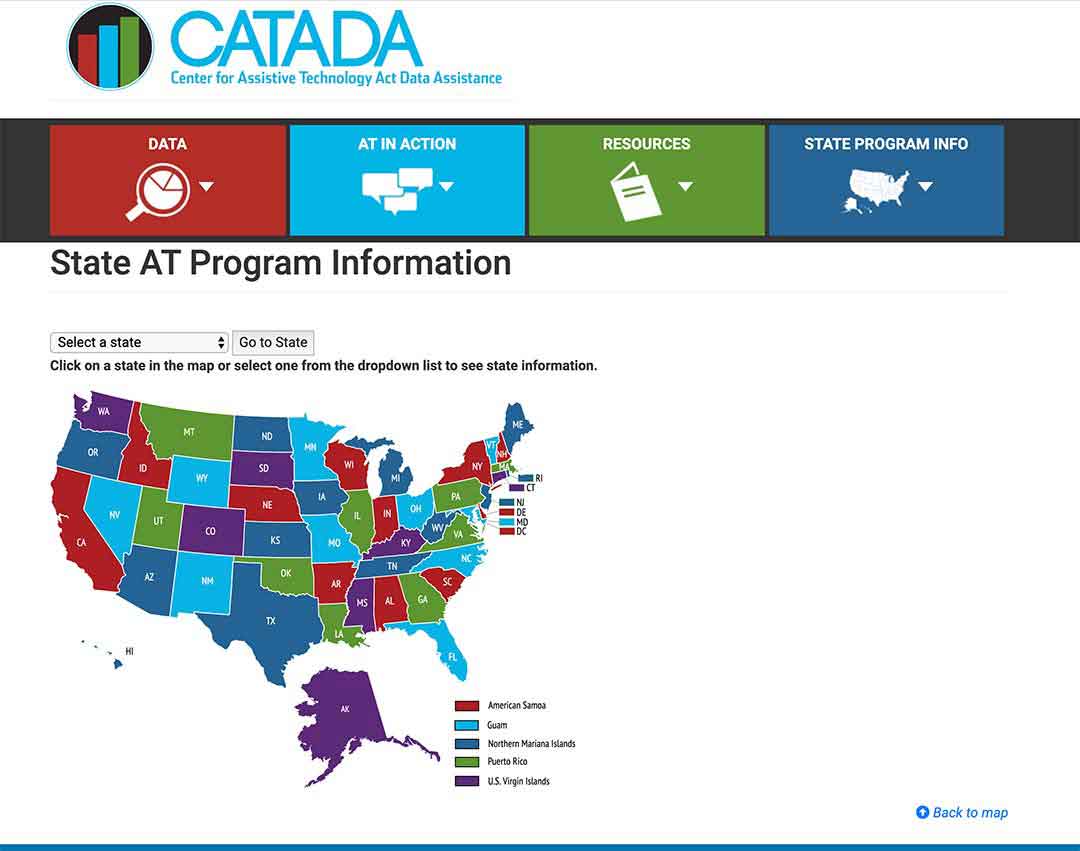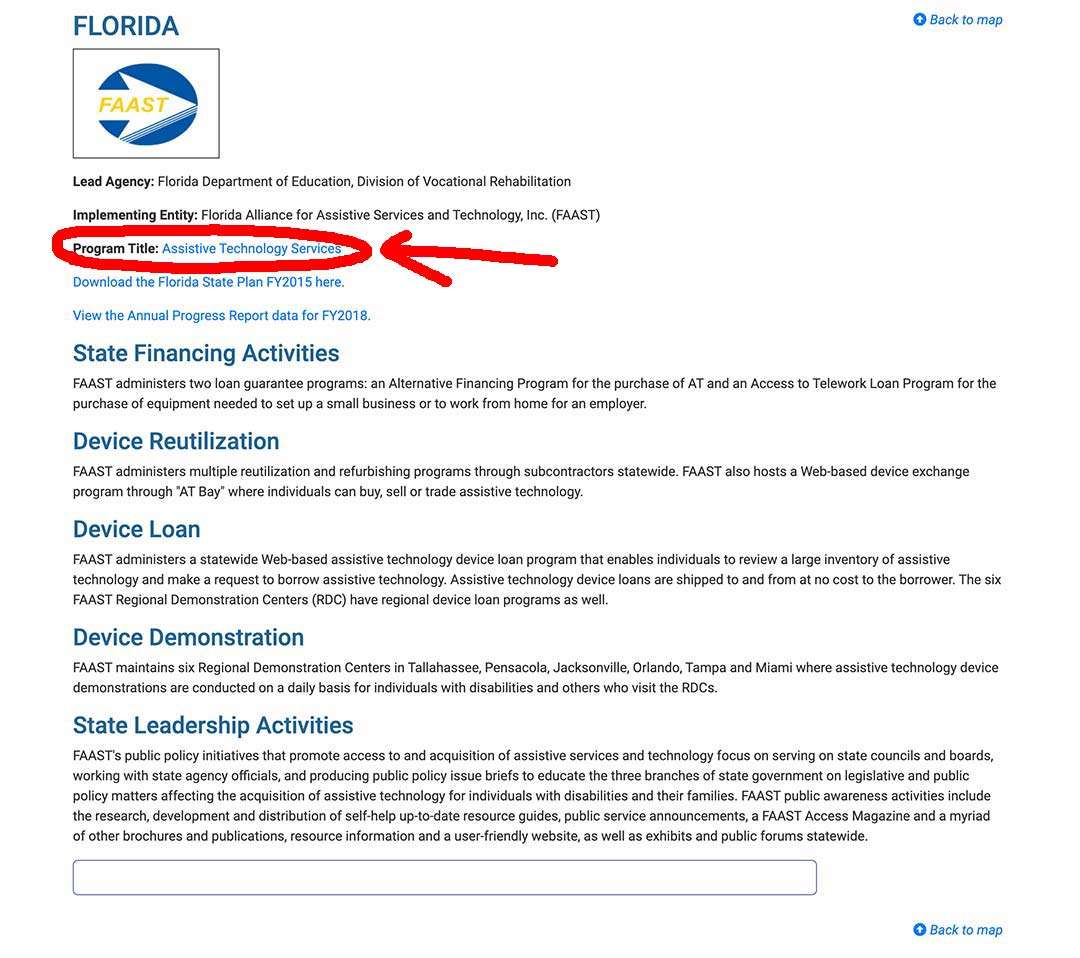Knee walkers, or knee scooters, are a very popular way of getting around, if you have a lower leg injury. I have to say they might be a bit too hard for elderly adults, like my 90-year-old mom, to use, but nevertheless they are very popular, although not exactly cheap !
Medicare Part B does not cover knee walkers, or knee scooters, as they are not considered “medically necessary”. You may find you can get coverage with Medicaid and other sources of state funding and financial assistance, if you are eligible.
The knee walkers are for those who have just had an ankle/foot surgery, or an injury, as it allows you to completely take the weight off the ankle/foot.
Unfortunately, Medicare considers them to be more of a comfort item than “medically necessary”.
You can, though, get walking boots, crutches, walkers and wheelchairs covered, as long as you follow the process correctly, and you are really eligible.
Let’s take a look at what you have to do to get those through Medicare Part B for “use in the home”.
Contents Overview & Quicklinks
How much is a knee walker or knee scooter ?
Where can you rent a knee scooter ?
What if you have a Medicare Advantage Plan ?
Does Blue Cross Blue Shield cover knee scooters ?
Does Kaiser cover knee scooters ?
Does Aetna cover knee scooters ?
Does Cigna cover knee scooters ?
Does Medicare cover transport chairs ?
How often will Medicare pay for a wheelchair ?
Will Medicare pay for a wheelchair and a walker ?
Does Medicare cover shower chairs or any other bathroom equipment?
What equipment does Medicare cover ?
How do you get coverage from Medicare Part B for DME ?
What do you do with the signed prescription from your Medicare-enrolled doctor ?
Finding a Medicare-enrolled DME Supplier near you ?
Durable Medical Equipment generally covered by Medicare if you qualify
Free one-on-one help with understanding Medicare
Does Medicaid cover knee walkers ?
Find the HCBS programs, waivers and 1915 waivers in your state ?
How to get DME with Medicaid and state waivers and HCBS programs ?
How much is a knee walker or scooter ?
Knee walkers, or scooters, are not the cheapest items out there – costing anywhere between $180 and $400, ignoring one or two luxury models which cost around $900.
You can also buy refurbished models if you feel the cost of a brand-new item is a little high, for equipment which you will most likely only be using for a few weeks.
It is difficult to put a price on the refurbished models, but if you contact local non-profit organizations, you should be able to find one which is recycling medical equipment in your area, and will most likely have good prices – and cheaper than your standard used medical equipment dealer.
You may also want to take a look at thrift stores in your area, but be warned that the items are usually bought “as is”, will not have been refurbished, have no warranty as to their safety, and the store will not accept any liability in case of an accident in most cases.
Luckily, you can also find and rent.
Knee walker rentals
There are many places you can rent knee scooters, and you can expect to pay around $30 per week, or $ 90 per month.
Where can you rent a knee scooter ?
If you look online for “knee scooter rentals” you will find the companies renting in your area, and even some from further away who will deliver and pick up the knee scooter.
Most Medical Supply Stores will rent more expensive items, such as knee scooters, as they are only needed for brief periods of time.
You will also have the peace of mind knowing that you are renting from companies who maintain the equipment to a high standard for their clients safety.
Knee scooter rental near me ?
Again, I would look online and type into google, or whatever is your search engine of choice, “knee scooter rental near me”, and you will come up with a list of online stores who will deliver, and also medical supply companies in your area who rent knee scooters.
What if you have a Medicare Advantage Plan ?
If you have a Medicare Advantage Plan, you are covered for everything that Original Medicare Parts A and B cover.
You will have at least the same coverage for DME for “use in the home” as with Medicare Part B and some extras, the number of which is currently growing.
The Centers for Medicare & Medicaid announced in 2019 an expansion of the coverage of Medicare Advantage and Part D –
Beginning in 2019, Medicare Advantage plans can now offer supplemental benefits that are not covered under Medicare Parts A or B, if they diagnose, compensate for physical impairments, diminish the impact of injuries or health conditions, and/or reduce avoidable emergency room utilization.
The text source – “CMS finalizes Medicare Advantage and Part D payment and policy updates to maximize competition and coverage” April 1, 2019. The original text is here.
It allowed for new benefits which are for chronic conditions, and allow for different types of equipment to be covered for these conditions and even some equipment like grab bars.
The process for assuring coverage and for then purchasing the DME will vary from provider to provider, as each plan will have its own network of doctors and suppliers that they will want you to use.
So always contact your plan provider before you get any equipment.
Does Blue Cross Blue Shield cover knee scooters ?
It is impossible to give a definitive answer for this as there are so many Blue Cross Blue Shield companies across all the states, and some cover knee scooters, and some don’t.
You will have to check and see what is available in your state.
Blue Cross Blue Shield Medicare Advantage Plan – you may find that you do have coverage, as these plans are now allowed to give more extra benefits.
If you have a Blue Cross Blue Shield insurance plan, just call your insurer and give them –
- the CPT Code (the diagnosis code which your doctor has given)
- the HCPC Code (the equipment code for the knee scooter)
Once your insurer has the codes, they will be able to tell you if you are covered.
Your physician will have to diagnose your condition and to prescribe the knee scooter as medically necessary.
Does Kaiser cover knee scooters ?
I have only found examples of Kaiser Permanente policies which do not cover knee scooters.
We cannot provide motorized wheelchairs or scooters. Another item that some of our patients have found useful for getting around while remaining non-weight bearing on the operated limb is a knee caddy walker it is not a covered item.
You can find the original text here.
This does not mean that Kaiser Permanente policies across the states they serve all do not cover knee scooters.
If you have a Kaiser Permanente plan, you should call them and give them –
- the CPT Code (the diagnosis which your doctor has given)
- the HCPC Code (the equipment code for the knee scooter)
You will of course have to get a prescription from a physician in your plan network to which states that your knee scooter is “medically necessary”.
Kaiser Medicare Advantage Plans
As with all Medicare Advantage Plans, there is a possibility that you may find a Kaiser Medicare Advantage Plan which offers a knee scooter as an extra benefit, over and above those of the normal Original Medicare benefits.
You will have to check all the Kaiser Permanente Medicare Advantage Plans offered in your state, to see if anyone does.
Does Aetna cover knee scooters ?
Aetna covers knee walkers in certain situations –
Kneeling Walker/Knee Walker/RollingKnee Walker/ Kneeling Crutch
Aetna considers a kneeling walker/knee walker/rolling knee walker (e.g., Roll-A-Bout Walker, Rolleraid, Turning Leg Caddy) or a kneeling crutch (e.g., iWALKFree]) medically necessary DME for below-the-knee injuries/conditions if the member meets criteria for a standard walker, crutch or cane, but is unable to use one of those devices due to other impairments (e.g., member only has one functional arm, etc.).
You can find the source text on the Aetna website here.
Does Cigna cover knee scooters ?
Cigna does cover knee crutches in certain situations –
A knee crutch/hands-free walker (e.g., Roll-A-Bout knee walker, Rolleraid™, iWALKFree®, Turning Leg Caddy®) (HCPCS code E0118) for below-the-knee injuries or surgery is considered medically necessary when the individual’s condition is such that he/she is unable to use crutches, standard walkers or other standard ambulatory assist devices.
You can read the source text on the Cigna website here.
Does Medicare cover walkers ?
If you have a prescription from a Medicare-enrolled physician, which states that a walker is “medically necessary”, Medicare Part B will cover the walker for 80% of the Medicare-approved price.
You will have to pay your 20% co-insurance, and your annual deductible if it is outstanding.
Does Medicare cover transport chairs ?
Original Medicare Part B does cover transport wheelchairs when they are prescribed by a Medicare-enrolled doctor.
To qualify for an in-home transport wheelchair, your treating doctor has to state that the transport wheelchair is “medically necessary”.
“Medicare’s Wheelchair and Scooter Benefit” – Revised October 2019, gives a full technical explanation of who qualifies and why.
If you have a prescription from a Medicare-enrolled doctor, and you have used a Medicare-enrolled “Participating” supplier who accepts assignment (more about this later), you can expect Medicare Part B to pay 80% of the purchase, or rental, of the transport wheelchair, and you will have to cover your 20% co-payment and, if it applies, your deductible.
How often will Medicare pay for a wheelchair ?
The Medicare Part B policy for replacing covered DME, is to replace equipment which they cover, that is –
- worn out through use
- that has been in your possession for its entire lifetime
- the item must be so worn out that it can’t be fixed
- the minimum period considered to be a lifetime for an item is five years
- the lifetime varies on the type of equipment
Typically, a wheelchair which is worn out under Medicare Part B coverage can be replaced every five years, as long as it has always been in your possession.
For worn out items which have not reached the end of their lifetime, Medicare will pay to repair them – they will pay up to the cost of a replacement item.
Each time you replace an item after 5 years, or when it is worn out, you will have to go through the whole process with your Medicare-enrolled doctor of getting the prescription again.
Will Medicare pay for a walker and a wheelchair ?
Medicare Part B will not cover more than one mobility aid for use in the home.
You either get a wheelchair, or a walker.
The reasoning is that if you can use a walker, you don’t need a wheelchair, and so you fail their rule of “medical necessity” for the wheelchair, and if you have a wheelchair, a walker should be of no use to you, because you are not in condition to use a walker.
Does Medicare cover shower chairs, or any other bathroom equipment ?
Original Medicare B will not cover shower chairs for use in the home, as they are not “medically necessary”.
Medicare considers the shower chair to be a comfort item.
And unfortunately, they seem to feel the same way for much of the equipment in the bathroom.
None of the following items are covered –
- bath seats
- grab bars
- floor to ceiling poles
- bath lifts
- shower chairs
- bath chairs
- raised toilet seats
- transfer seats
- toilet safety frames
Medicare does not consider any of these to be “medically necessary”.
There are some pieces of equipment which Medicare will cover that can be used for bathroom safety if you have problems standing –
- walkers
- crutches
- bedside commodes
If these item are prescribed by a Medicare-enrolled doctor as “medically necessary” in accordance with medicare’s guidelines, they will typically be covered.
Medicare Advantage Plans, or Medicare Part C as it is also known, is a slightly different story.
As of the fall of 2020 new benefits are being allowed on Advantage Plans for individuals with chronic illnesses, and some of these may include bathroom safety equipment.
What equipment does Medicare cover ?
Durable medical equipment, or DME, is the name given to medical equipment that Medicare Part B will cover “for use in the home”.
For an item to qualify as durable medical equipment, it must –
- be able to withstand repeated use over a sustained period of time – durable
- be used for a medical reason only – not for comfort
- be of use to someone who is actually sick, and of little use to a person who is well
- be primarily for use in the home
- be expected to last at least 3 years
How do you get coverage from Medicare Part B for DME ?
To get coverage from Medicare Part B for DME, for “use in the home” –
- you have to be enrolled in Medicare Part B
- have your Medicare-enrolled doctor give you a signed prescription which states that the equipment is a “medically necessary” according to the Medicare guidelines
- you have to purchase or to rent the equipment through a Medicare-enrolled supplier
For Medicare coverage “living at home” is defined as –
- living in your own home
- living in the family home
- living in the community, such as assisted living
What do you do with the signed prescription from your Medicare-enrolled doctor ?
Once you have your prescription, you –
- find a Medicare-enrolled DME supplier
- make sure the supplier is a Medicare-enrolled “participating” supplier who accepts “assignment” – this ensures you pay no more than you have to
- the equipment Medicare gives coverage to is the more basic models, but with certain equipment you may be able to upgrade, but you will pay the extra, and it isn’t always possible
- choose the model of the equipment that you have been prescribed
- complete all the necessary paperwork with the supplier to comply with Medicare
As long as you have used a Medicare-enrolled supplier, with your prescription from a Medicare-enrolled doctor stating that your item is “medically necessary”, Medicare part B covers 80% of the Medicare-approved price for DME.
If you used a Medicare-enrolled “participating” supplier who accepts assignment, you will only have to pay your Medicare 20% co-payment of the Medicare-approved price for your DME, plus your deductible if it applies.
Do not purchase or rent from a Medicare-enrolled supplier who is not a Medicare-enrolled “Participating” supplier who accepts “assignment”, if not you may more than is necessary. Always confirm with the supplier !
Medicare may rent, or purchase, your DME – if your item is rented from the supplier, which is the case for most of the pricier equipment, you will still have the same payment structure, you will just pay a 20% co-payment of the monthly rental.
Finding a local Medicare-enrolled DME Supplier near you
You can use this link to find a Medicare-approved supplier who is local to you – Medicare.gov
Durable Medical Equipment generally covered by Medicare if you qualify
If you don’t find the equipment you are looking for in my list of Medicare covered DME below, you can use this link to Medicare.gov
Air-Fluidized Bed
Alternating Pressure Pads and Mattresses
Audible/visible Signal Pacemaker Monitor
Pressure reducing beds, mattresses, and mattress overlays used to prevent bed sores
Bead Bed
Bed Side Rails
Bed Trapeze – covered if your loved one is confined to their bed and needs one to change position
Blood sugar monitors
Blood sugar (glucose) test strips
Canes (however, white canes for the blind aren’t covered)
Commode chairs
Continuous passive motion (CPM) machines
Continuous Positive Pressure Airway Devices, Accessories and Therapy
Crutches
Cushion Lift Power Seat
Defibrillators
Diabetic Strips
Digital Electronic Pacemaker
Electric Hospital beds
Gel Flotation Pads and Mattresses
Glucose Control Solutions
Heat Lamps
Hospital beds
Hydraulic Lift
Infusion pumps and supplies (when necessary to administer certain drugs)
IPPB Machines
Iron Lung
Lymphedema Pumps
Manual wheelchairs and power mobility devices (power wheelchairs or scooters needed for use inside the home)
Mattress
Medical Oxygen
Mobile Geriatric Chair
Motorized Wheelchairs
Muscle Stimulators
Nebulizers and some nebulizer medications (if reasonable and necessary)
Oxygen equipment and accessories
Patient lifts (a medical device used to lift you from a bed or wheelchair)
Oxygen Tents
Patient Lifts
Percussors
Postural Drainage Boards
Quad-Canes
Respirators
Rolling Chairs
Safety Roller
Seat Lift
Self-Contained Pacemaker Monitor
Sleep apnea and Continuous Positive Airway Pressure (CPAP) devices and accessories
Sitz Bath
Steam Packs
Suction pumps
Traction equipment
Ultraviolet Cabinet
Urinals (autoclavable hospital type)
Vaporizers
Ventilators
Walkers
Whirlpool Bath Equipment – if your loved one is home bound and the pool is medically needed. If your loved one isn’t home bound, Medicare will cover the cost of treatments in a hospital.
Prosthetic and Orthotic Items
Orthopedic shoes only when they’re a necessary part of a leg brace
Arm, leg, back, and neck braces (orthotics), as long as you go to a supplier that’s enrolled in Medicare
Artificial limbs and eyes
Breast prostheses (including a surgical bra) after a mastectomy
Ostomy bags and certain related supplies
Urological supplies
Therapeutic shoes or inserts for people with diabetes who have severe diabetic foot disease.
Free one-on-one help with understanding Medicare
SHIP – State Health Insurance Assistance Programs –
SHIPs are present in all states offering free counseling services on Medicare, Medicaid and Medigap.
I’ve written a quick post outlining how to find your local SHIP and to get free help – “Free Help Understanding Medicare And Medicaid ? Here’s Where You Get It”.
Does Medicaid cover knee walkers ?
Each state in the US has a lot of latitude in what it can do with Medicaid, due to its funding – both federal and state sources – as long as it keeps within the basic Medicaid guidelines.
In any state, Medicaid may agree to waive some requirements for eligibility for different programs, allowing states to provide care to those who might otherwise slip through the system.
These are known as Waivers and have specific eligibility requirements, and may have limited places and waiting lists.
Care in the home – Medicare and state programs
Programs called “Home and Community Based Services” (HCBS), “Waivers” or “1915 Waivers” exist to help individuals maintain their independence in their homes, and the community.
These are primarily for low income families, disabled individuals and the elderly.
To find out if you are eligible, contact your State Medicaid Agency here.
Your local Area Agency on Aging should be able to help you find out as well.
To find out more on HCBS programs or waivers, you can follow the link below to medicaid.gov –
https://www.medicaid.gov/medicaid/hcbs/authorities/index.html
The HCBS programs and waivers, and 1915 waivers will all cover “home medical equipment”, often up to 100%, to help the elderly and disabled to stay in their own homes.
The term “home”, for the beneficiary, is used to cover any of the following –
- their own home
- their family home
- a group home
- an assisted living facility
- a custodial care facility
Programs and waivers, which often have greater breadth in what they consider as DME for “in home use”
HCBS programs and waivers with a type of budget management called either “Consumer Direction” or “Self Direction”
The program participant is largely in charge of how the money is spent.
They are given a budget to cover their needs. The participant will also have the help of an appointed a financial advisor.
If, for the participant, being able to maintain their independence depends on them having certain equipment, as long as the budget covers it, they will very often get it – this can lead to a wider range of equipment being allowed as DME.
To find out more about Medicaid Self Direction, click here.
HCBS programs and waivers with a type of budget management called either “Consumer Direction” or “Self Direction”
The program participant is largely in charge of how the money is spent.
They are given a budget to cover their needs. The participant will also have the help of an appointed a financial advisor.
If, for the participant, being able to maintain their independence depends on them having certain equipment, as long as the budget covers it, they will very often get it – this can lead to a wider range of equipment being allowed as DME.
To find out more about Medicaid Self Direction, click here.
Returning the elderly back into their homes from nursing home care
Money follows the person – this Medicaid program takes the elderly who are in care but who could, with help, live in their own home, and helps them to make that transition.
What is essential to the move, and to maintaining the elderly person’s independence in their home, is bought by the program.
It can be as much as remodeling parts of the home to make the move possible.
The range of DME’s is again wider than what is allowed on Medicare.
Find the HCBS programs, waivers and 1915 waivers in your state
I’ve written a guide with the list of the HCBS Waivers, 1915 Waivers, HCBS Programs and the Money Follows The Person Programs for seniors available in each state, along with links to the different websites. I have also listed all the PACE Programs – Programs of All-inclusive Care for the Elderly – for care in the home – “Medicaid Home and Community Based Services Waivers and Programs For Seniors Listed By State”.
How to get DME with Medicaid and state waivers and HCBS programs ?
Step 1
– the doctor, or therapist, has to provide a medical justification letter, stating it is medically necessary
Step 2
– find a Medicaid-approved DME supplier, and give them the medical justification letter
Step 3
– the Medicaid-approved supplier fills out a Prior Approval Application form for Medicaid
Step 4
– the Prior Approval Application is sent to the Medicaid State Office
Step 5
– if you are unsuccessful you will be contacted and given the reasons as to why, as well as advice on how to make an appeal
Step 6
– if approved, you will receive the DME
If your income is a bit too high to qualify for Medicaid
Spend Down Programs
Spend Down programs are designed by Medicaid to lower a person’s income, or income + assets level, so that they may qualify for Medicaid coverage.
In what is called a “spend down” certain expenses may be deducted from a program participant’s income, so that the level drops below the income limit, and or, asset limit for Medicaid, and the participant becomes eligible for coverage.
There are two types of Spend Down –
- Asset Spend Down
- Income Spend Down
If you want to know more about Spend Down I wrote a post with who can qualify for Spend Down, the which expenses are deductible, and how to find out if you qualify – “What is Spend Down ?”
To find your State Medicaid State Agency
If you just want to talk to, or to email someone, contact your state Medicaid Agency here.
Step 1 –
Click the link to Medicaid.gov, look to the section I outlined in red.

Step 2 –
Select your state and click on the button they have marked “GO” – it will take you to your State Medicaid Agency with all their contact info.

State Funding Assistance
Assistive Technology Programs
All states have Assistive Technology Programs to increase access to assistive devices in the home – the primary focus is on the elderly and the disabled.
Assistive Technology devices covers equipment which makes it possible for a person to complete tasks they otherwise cannot – from bathroom safety equipment through to electronic digital devices.
To find out what programs are in your state, click here.
Step 1/
Pick your state on the map or the drop-down menu, and click on “Go to state”
– I chose Florida for this example

Step 2/
Click on the link “Program Title” – for my example I outlined it in red.

Step 3/
The AT Project state website will come up, and you can sign up, or use their contact info.

State Financial Assistance Programs
A number of states have non-Medicaid programs which help the elderly to remain living in their homes.
Paying for safety items, assistive equipment, the programs will also cover the costs of remodeling bathrooms, wheelchair ramps, kitchen.
The programs primarily focus on the elderly and the disabled, and pay with grants, give loans or do a combination of both.
Find out about these from your local Area Agency on Aging.
Summary
You cannot get a knee walker, or knee scooter, with Medicare Part B for use in the home.
You can though, get coverage for crutches, walkers, Rollators, and walking boots, if they are “medically necessary”, and you have a signed prescription from a Medicare-enrolled doctor.
Medicare will typically cover 80% of the Medicare-approved price of any equipment they cover.
Always ask the supplier if they are a Medicare-enrolled “Participating” Supplier who accepts “assignment”.
Medicaid and state programs in many cases accept a broader range of equipment as DME, and will often pay 100% of the cost.
I’m Gareth, the author and owner of Looking After Mom and Dad.com
I have been a caregiver for over 10 yrs and share all my tips here.

